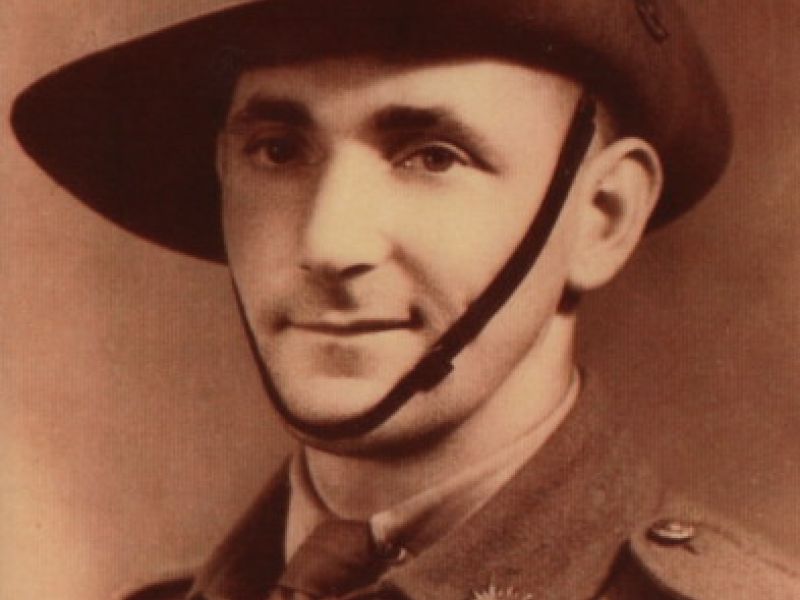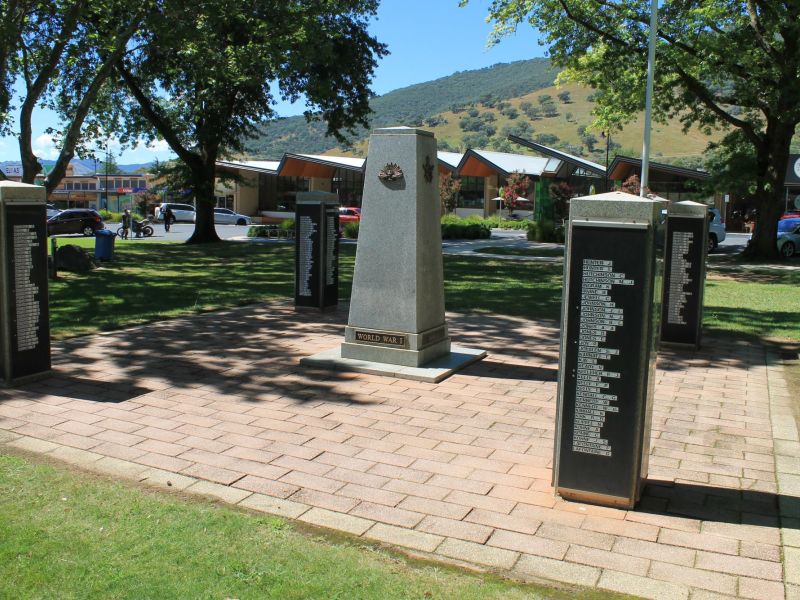Charles Alexander Wright
Charles was born on the 15th of April, 1913, in Tallangatta, Victoria. He was the eldest of six children to William and Mary (née Bailey) Wright.
In 1936 he married Amelia Maria Kennedy in Albury, New South Wales. In October of 1936 Charles and Amelia added to their family with the birth of their daughter, Shirley. The Wright’s lived in the Tallangatta Valley with Charles working as a labourer in the district.
Charles enlisted on the 9th of June, 1941, at Royal Park in Melbourne. He was allocated the Army Number VX57420 and initially taken on strength with the RRD. He was granted leave without pay from the 12th of June to the 18th of June. One week after returning from leave he was transferred to the Australian Army Service Corps. In early September of 1941 Charles was sent to the 6th Training Battalion at Darley Camp, eight kilometres north-west of Bacchus Marsh. His service records indicate that he was sent here for “concentration”, possibly in an attempt to speed up his training. While at Darley camp he was transferred to the reinforcements for the 4th Reserve Motor Transport Company, a unit that was already stationed at Singapore.
He embarked on HMT JJ (HMT Sibajak) at Sydney on the 17th of September. One day after leaving Sydney he was admitted to the ship’s hospital with a fractured foot. He remained in hospital until the 30th of September. Upon arriving at Singapore he was transferred to the Alexandra Military Hospital. Although the reason is not given it may have been to have his foot checked. He remained here for five days before being discharged. Unfortunately, two days later he was readmitted suffering from the mumps. He would not rejoin his unit until the 7th of November.
For the remainder of November we can assume that Charles was busy working with his unit. The 4th Reserve M.T. Coy was involved in transporting material and personnel around Singapore. During this month they moved 23386 tons of supplies and 5491 personnel. To achieve this, the company had 33 Ford 4x4 3-ton trucks available for their use. Due to the heat and humidity, Charles’ day started with reveille at 0430 hours, followed by breakfast and parade. The working day commenced at 0600 hours. Convoy work included moving R.A.S.C. (Royal Army Service Corps) material from Singapore to Kuala Lumpur, a distance of over 350 kilometres. Speed was restricted to 20 mp/h or approximately 30 km/h.
Charles woke on the 8th of December, 1941, to the sound of a Japanese air raid. Bombs dropped in the vicinity of the camp and troops moved immediately to the dispersal area within the camp itself. From that moment, December became a flurry of movement with the company being used as drivers for a range of tasks, including driving ambulances and artillery tractors. Christmas day 1941 was work as usual. Charles and mates had an early evening meal of turkey, ham and fruit. A bottle of beer, or cordial for the non-drinkers, and a packet of cigarettes for each man was purchased from Regimental Funds.
January was chaotic. All vehicles were working practically day and night transporting stores, ammunition and personnel along the Malaysian Peninsula and Singapore Island. As Japanese forces worked their way down the Peninsula, Charles was involved in conveying retiring troops to stations further south. The drivers would often find casualties along the way and they’d immediately take them to hospital in Singapore.
The following month of February provided no reprieve. Aerial bombing and shelling from field guns increased until that fateful day of February the 15th, 1942 , when the 4th Reserve MT Company War Diary states “Arms laid down at 2030 hours”. During the second half of February, the 4th used their vehicles to transport supplies and clear wreckage from the streets, all of which were overseen by the Japanese. On the 17th of February the order came through that all P.O.W.s were to move to Changi Military Barracks. The War Diary for the 4th finishes on the 28th of February, 1942.
It’s not clear where Charles was during his time as a P.O.W. of the Japanese. The last entry in his Service Records is the statement “Died of illness whilst P.O.W. - acute enteitis”. Although the date of the casualty is the 4th of July, 1943, the date that it was known to authorities in Australia, and therefore his family, was the 12th of September 1945.
Charles was buried in the Kanchanaburi War Cemetery in Thailand. Charles is also remembered on the Australian War Memorial Roll of Honour, the Ballarat Australian Ex-Prisoners of War Memorial and the Tallangatta RSL War Memorial. For his service, he was awarded the 1939-1945 Star, the Pacific Star, the Defence Medal, the War Medal 1939-1945 and the Australian Service Medal 1939-1945.

 Stephen Learmonth
Stephen Learmonth